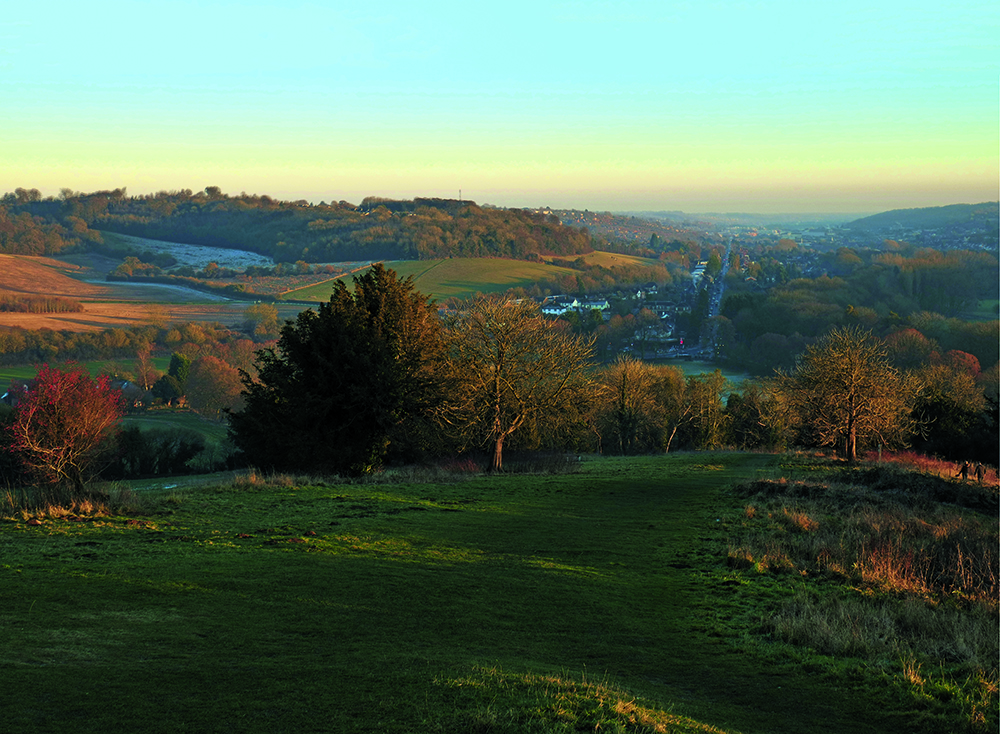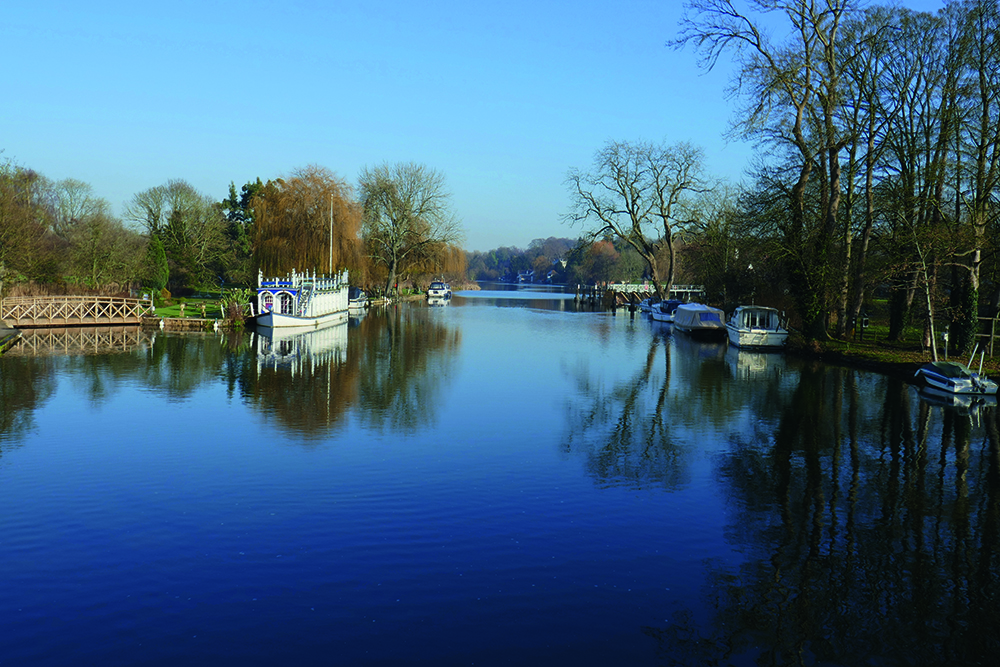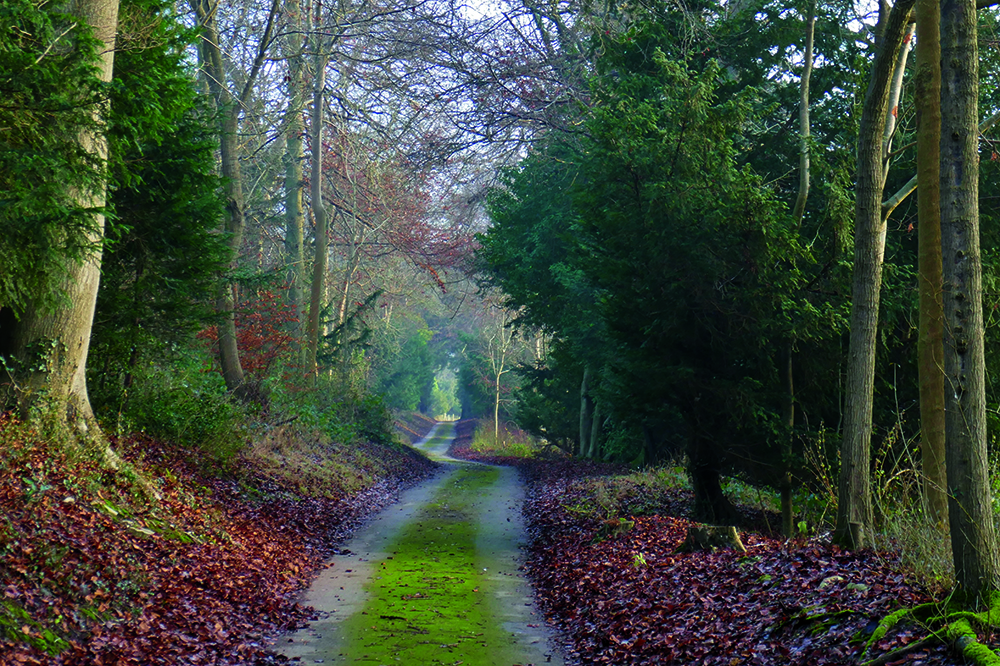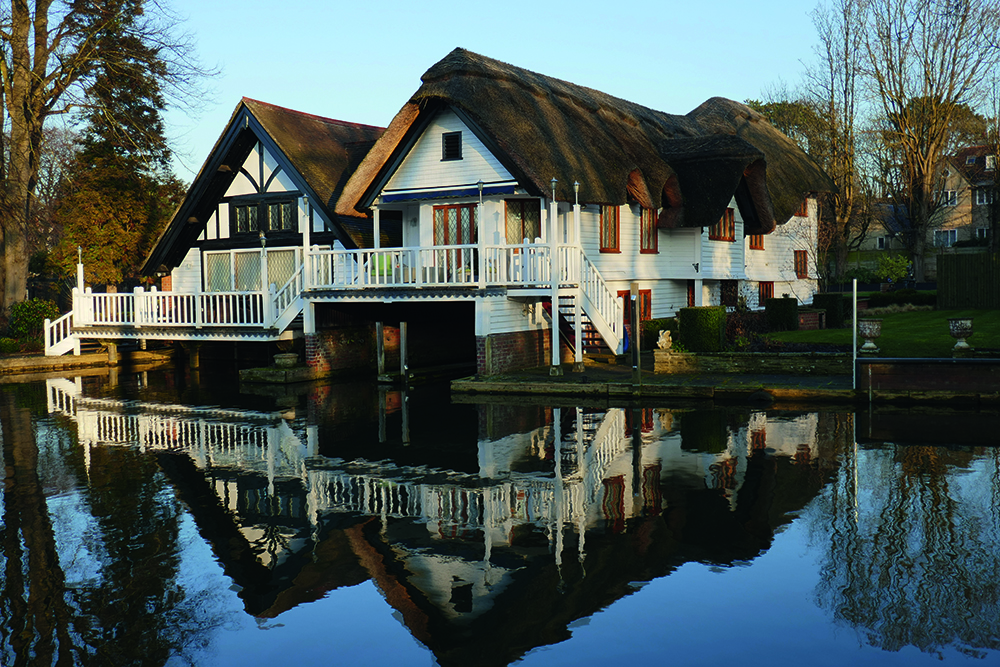Motorhome travel: A weekend in the Chilterns

The gently rounded Chiltern Hills are criss-crossed by a vast number of paths, remnants of ancient highways connecting settlements. Our Neolithic ancestors used the Ridgeway and the Icknield Way for trading, following the high routes over the chalk hills. Iron Age communities constructed Grim’s Ditch, lined with banks and trenches. Tree-lined sunken or hollow ways typical of the Chilterns may be relics of Anglo-Saxon routes used for moving cattle.
Today, these ways provide 1,200 miles of paths and I was itching for some walking! With woodland edging the field and the sun rising in shades of pink over the Thames below as we had breakfast, our first site at Bennets Wood Farm was perfect. The sunshine was a bonus as we set off walking to Goring-on-Thames, immediately picking up a tree-lined and sunken section of Grim’s Ditch.
The Ridgeway national trail travels over the North Wessex Downs and the Chilterns for 87 miles and is part of the original 250-mile Neolithic route from Dorset to Norfolk. Streatley and Goring-on-Thames are twin villages on opposite banks of the Thames at what has long been an important crossing point, although it wasn’t until 1837 that a bridge permanently joined the two villages. The stretch of the Thames at Goring-on-Thames is particularly lovely and Goring lock and weir is great for river watching.

With no shortage of options, we chose Goring-on-Thames’ oldest pub, The Catherine Wheel, for its name, cosy fire and flagstone floors as much as its tasty food. The village heritage trail points out buildings of interest and I couldn’t resist seeking out the Ferry House, which has had a string of famous residents. Oscar Wilde and WWII commander, Arthur (Bomber) Harris, lived in this large house and Mike Hailwood, the motorcycle road racer, learned to ride a motorbike here.
We walked off lunch along the Thames path to the red-brick Isambard Kingdom Brunel-designed railway bridge and the chalk grassland of Hartslock Nature Reserve. In the halcyon dusk, we took the direct route from Goring-on-Thames back over Holies Down to the motorhome.
The fields were white with frost and the sky blue as we drove through pretty Chiltern villages to Hughenden Manor, near High Wycombe, the next morning. This handsome, red-brick Victorian mansion is owned by the National Trust and was the much-loved home of the nineteenth century British prime minister, Benjamin Disraeli. Disraeli was not born into a noble family and owning a country seat was vital for an ambitious Tory MP.

There is a good system of paths on the Hughenden Estate and, in the sunshine, we followed the Monument Walk through the woodland. Climbing the hillside to the Disraeli Monument, which honours Disraeli’s father, we had a glorious view over the Chiltern Hills and to Hughenden Manor nestling among the trees. We returned by the church, where there is a memorial from Queen Victoria to Disraeli, her favourite prime minister.
A stunning sunset looked on the cards, so we drove the short distance to picturesque West Wycombe to watch from the hilltop Dashwood Mausoleum. The village is part of the Dashwood’s West Wycombe Park Estate, now in the ownership of the National Trust. Sir Francis Dashwood’s employment creation scheme paid workers to dig chalk from West Wycombe Hill for a new road to High Wycombe. The resulting cave is now known as the Hellfire Caves, having been used as the meeting place for the debauched and exclusive Hellfire Club.
Despite being dissected by the busy A40, there are many splendid medieval buildings to admire in West Wycombe. Most impressive is the Church Loft; a timber-framed building with brick infill from the fifteenth century; this has a fine clock hanging over the street and was probably originally a pilgrims’ hostel.

By next morning, fog had settled, so we headed for Pulpit Hill near Princes Risborough in search of native box woodland. Unsustainable use during the nineteenth century means that there are now only three box woodlands in England and the patch near Pulpit Hill is the largest. We climbed through beech trees draped in bright green lichen that appeared unreal in the fog, following a spaghetti junction of footpaths and bridal ways.
After crossing the top of Pulpit Hill, the site of an Iron Age hill fort, we picked up the Ridgeway and the open flanks of the hills. With the chalky soil sticking heavily to our boots, we were cocooned in the fog with little visibility. Out of this veil of cloud a kite silently emerged, close enough to startle me. The grassland gave way to woodland around Chequers, the prime minister’s country retreat, and we became fanciful, debating whether the couple following us through the murk were secret service agents.
A sign told us that we had reached the box woodland on Great Kimble Warren. It was like nothing I have seen before. The dense thicket of evergreen tumbled down the steep hillside – it is woodland fit for a fairytale. We passed through the village of Ellesborough, which has an attractive church with blue-grey flint walls and interesting gargoyles, before carrying on to Little Kimble as I had heard of another ecclesiastical gem. The stunning wall paintings in Little Kimble’s tiny church, which survive from the fourteenth century, didn’t disappoint.
Eager to shake off the misty shroud by finding higher ground, we were lucky at Lacey Green as we walked to the beautiful restored windmill in sunshine. Dating from the seventeenth century, this is the oldest smock windmill in England. It fell out of use around 1915 and into disrepair and has been lovingly restored by volunteers. The four-sailed windmill doesn’t open all year, but we still enjoyed admiring its exterior.
Our final walk followed in the footsteps of drovers in the northern Chilterns. Parking the motorhome at Tring railway station we briefly picked up the Ridgeway again to the pretty village of Aldbury. Already an ancient village at the time of the Domesday Book, the Icknield Way and Grim’s Ditch also pass this way. We climbed the wooded hillside to the Bridgewater Memorial on the National Trust’s Ashridge Estate and followed the tree-lined Prince’s Riding, a wide grassy clearing to Ashridge House.
We had trodden in the footsteps of our ancestors from the Neolithic, Iron Age and medieval times in the Chilterns. It felt apt that our last path – the towpath back to Tring station – followed a route created by our industrial era forebears.






.jpg)


Recent Updates
Editor's pick - The best relaxing campsites
Take some time away to a peaceful location with our top relaxing campsites guide ...
Campsites in the Lake District: our pick of the best
This National Park is one of the most iconic locations in the UK for outdoor adventures, which makes camping ...
Campsites in Kent: our pick of the best
This is our guide to the best attractions and top campsites in the Garden of England, from the iconic cliffs ...
Camping guide to trailers
Trailer stash or trailer trash? Being able to carry lots of other gear when you go camping isn’t such a bad ...
Campsites in Cornwall: our pick of the best
Our selection of the best campsites for exploring one of England's most popular counties ...
Campsites in Devon: our pick of the best
The best campsites for discovering this popular southwest county ...
Coastal campsites: our pick of the best in Britain
Enjoy being beside the seaside with our choice of the best coastal campsites in England, Scotland and Wales ...
Best family campsites in the UK
Our pick of the best campsites for a family holiday ...
Campsites in Wales: our pick of the best
Our selection of the best campsites for exploring wonderful Wales ...
Top campsites near cities for weekend breaks
For a multitude of things to see and do all year round, head for the city with our top campsites for city ...
Other Articles
Campsites open all year: our pick of the best
Enjoy holidays year-round with this selection of campsites that are open all year ...
Campsites in Scotland: our pick of the best
Our choice of the top campsites to enjoy a touring adventure in Scotland, from the Highlands to the wild ...
Yorkshire campsites: our pick of the best
Perfect for exploring Yorkshire, check out these high-quality campsites ...
Campsites in Dorset: our pick of the best
From the stunning coastlines to beautiful countryside, Dorset is perfect for a camping holiday ...
Dog-friendly campsites: our pick of the best
The best campsites for a holiday with your four-legged friend ...
Theme park campsites: our pick of the best
If your idea of a top family holiday is strapping yourself in for thrills and spills on some of the best UK ...
Adults-only campsites: our pick of the best
For a grown-ups-only holiday, check out our recommended sites just for adults ...
Location guide: heavenly Hampshire
Hampshire – a glimpse of a wonderful combination of coast, countryside and city. This attraction-rich region ...
Fishery Creek Touring Park: campsite review
A campsite review of Fishery Creek Touring Park, Hampshire ...
Camping with dogs
Camping is for the whole family – including the four-legged members. Follow our tips for trouble-free camping ...